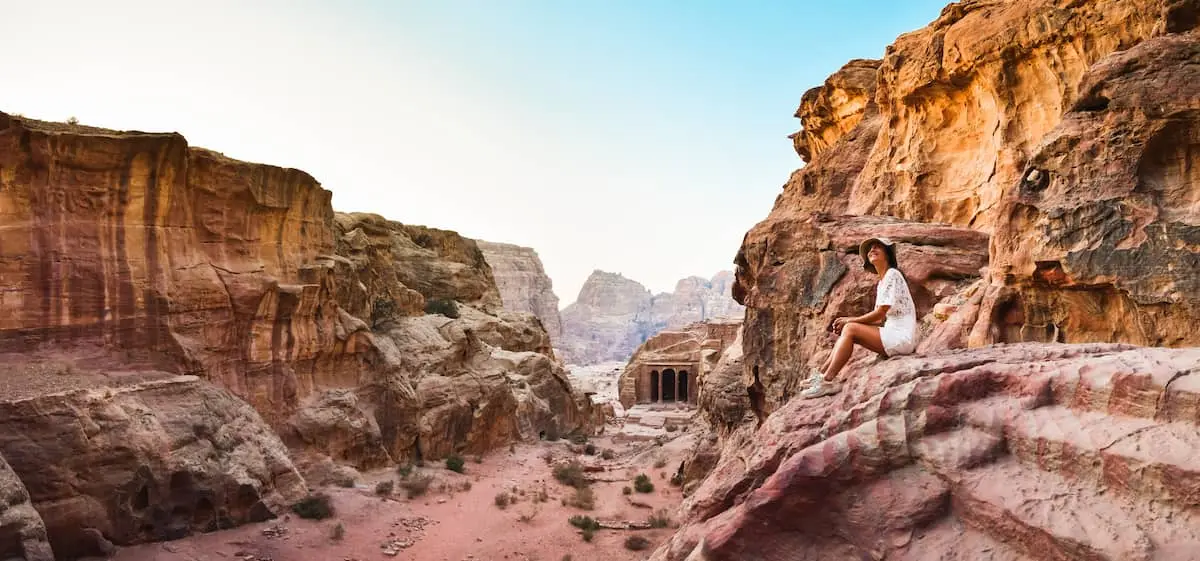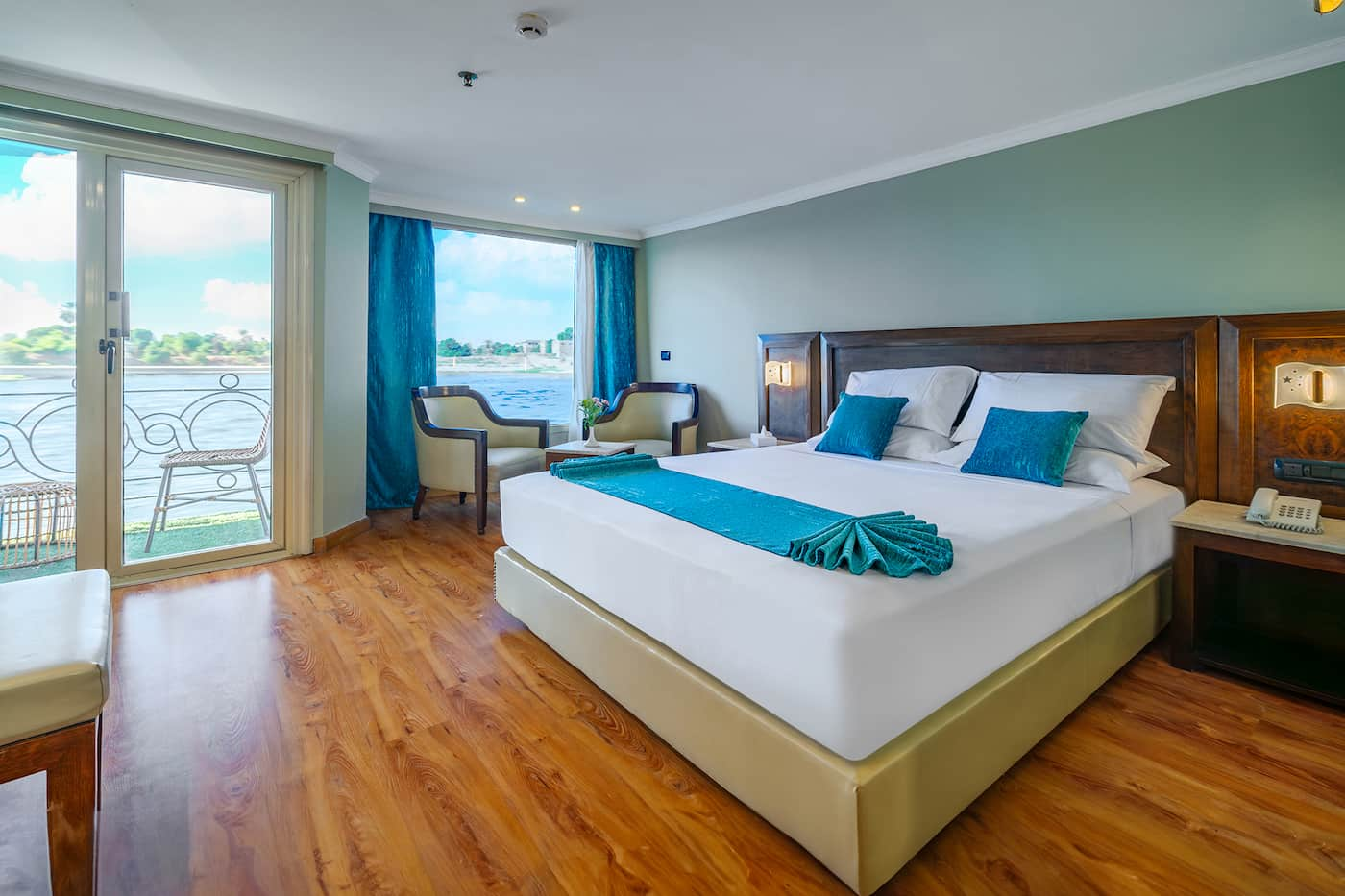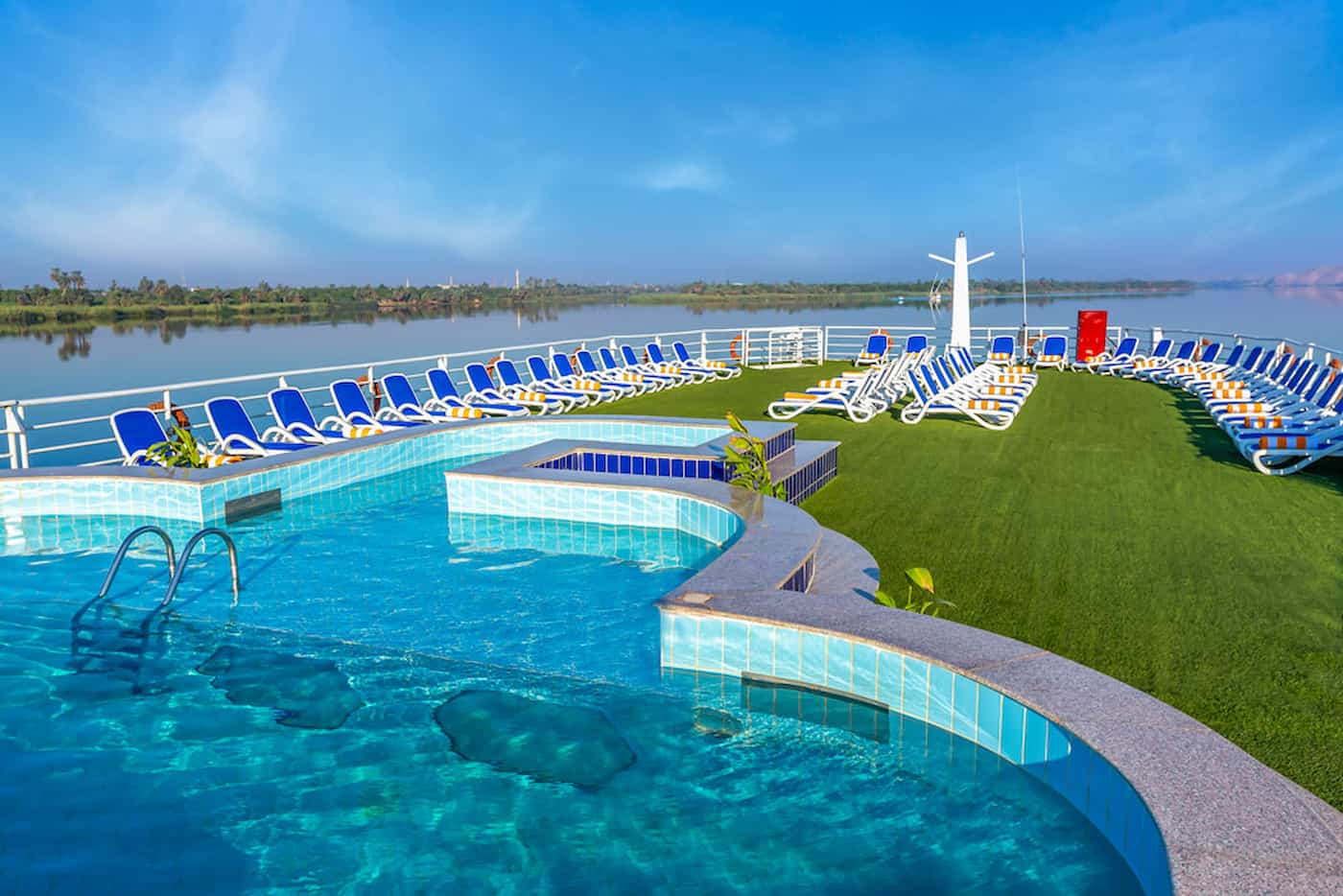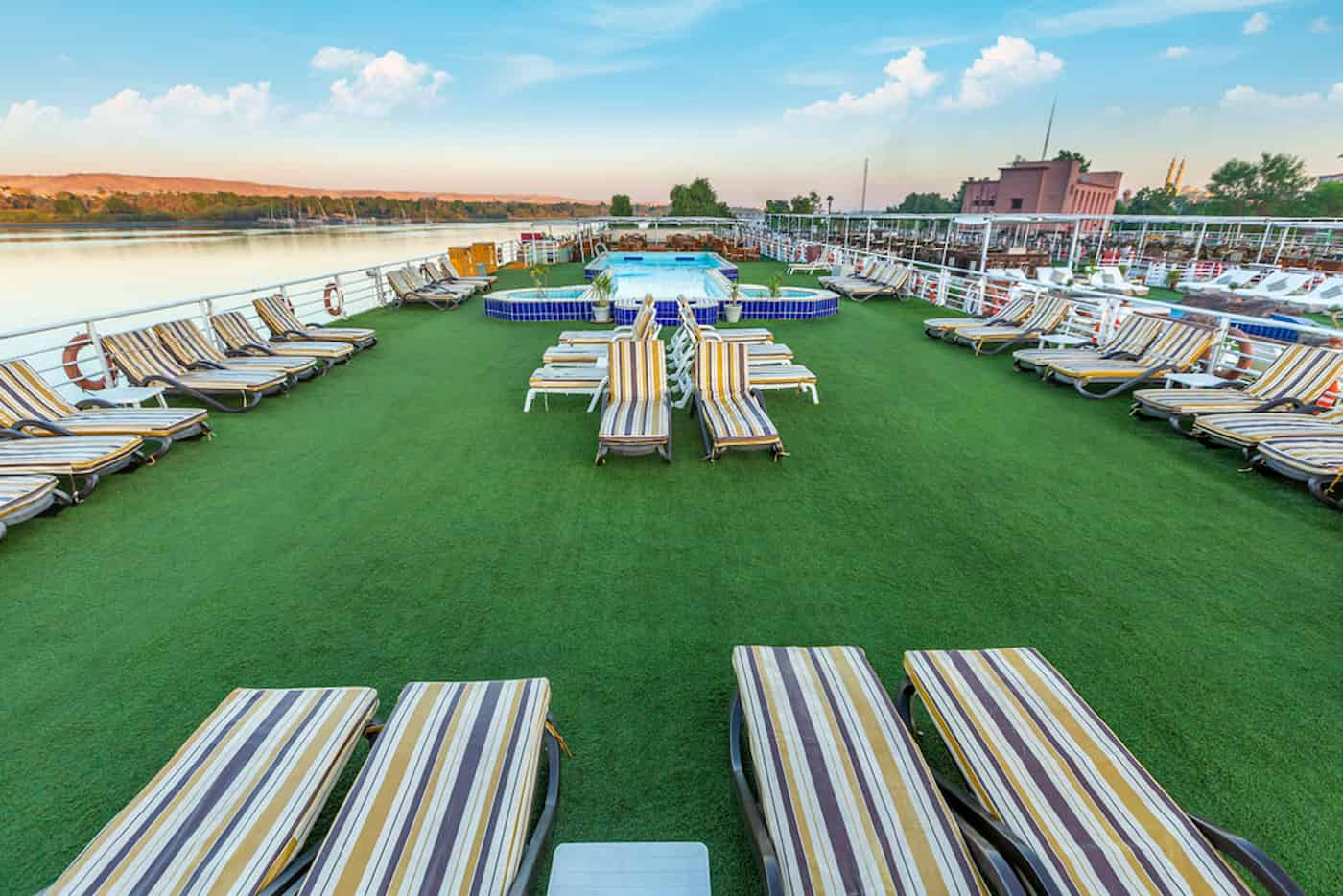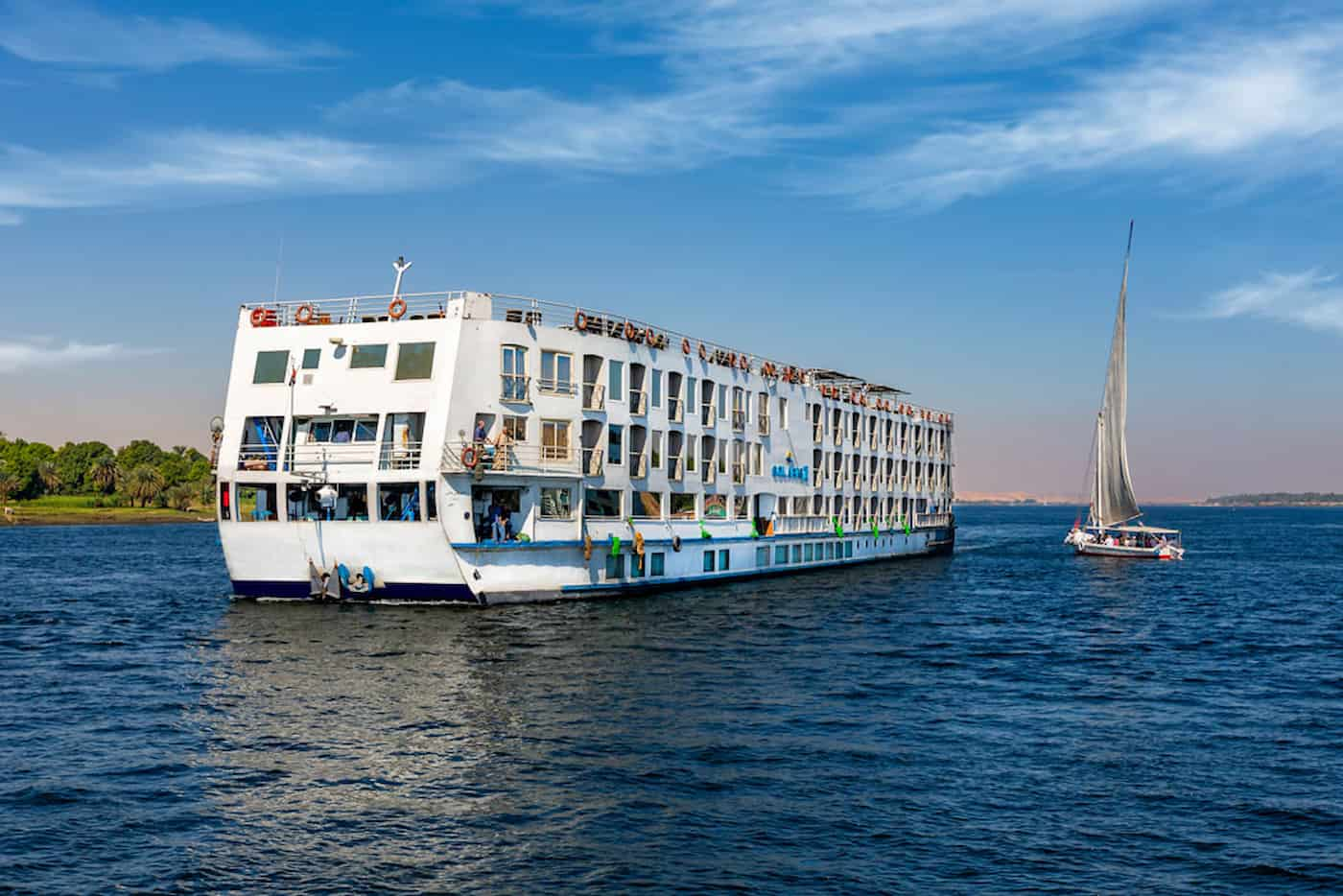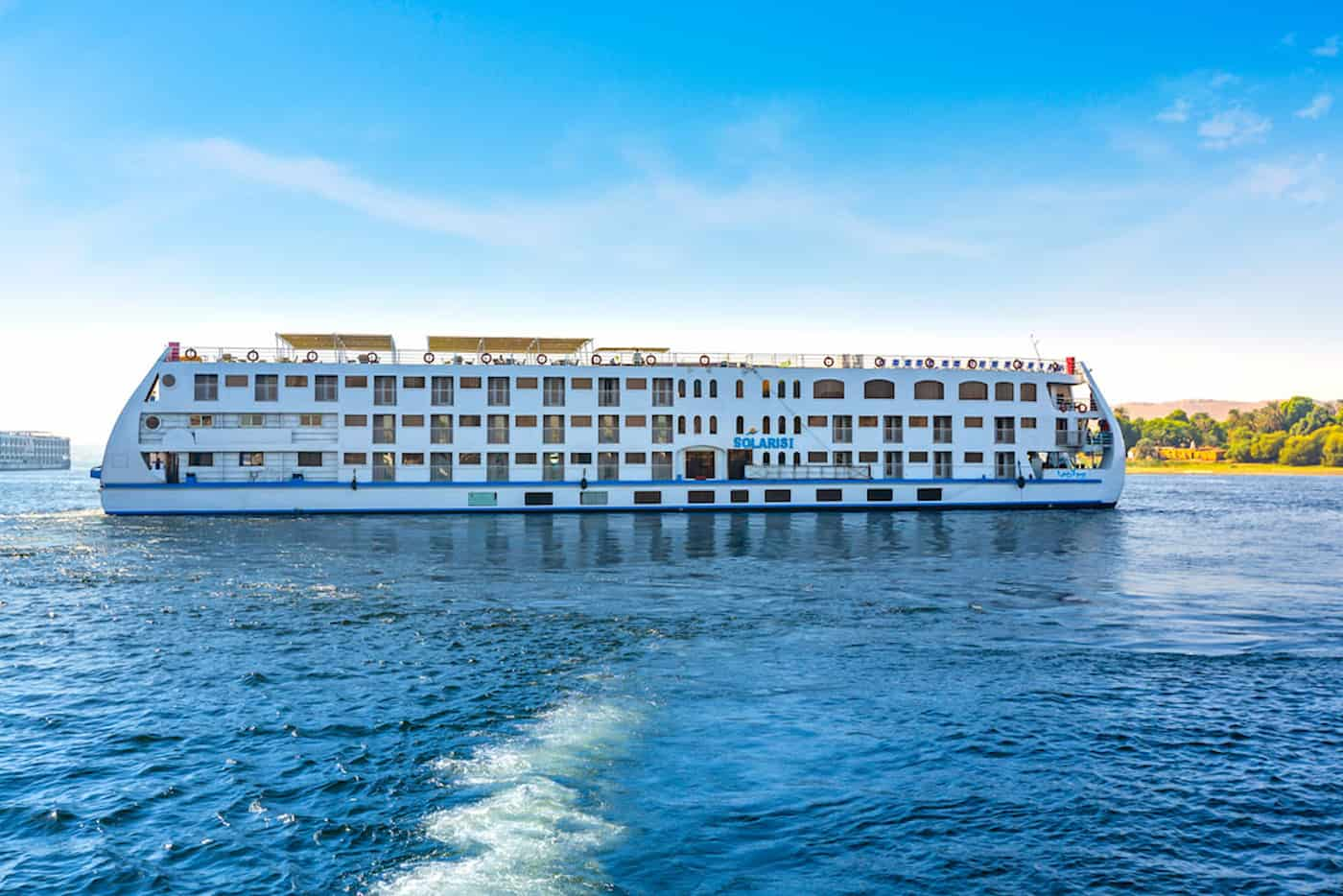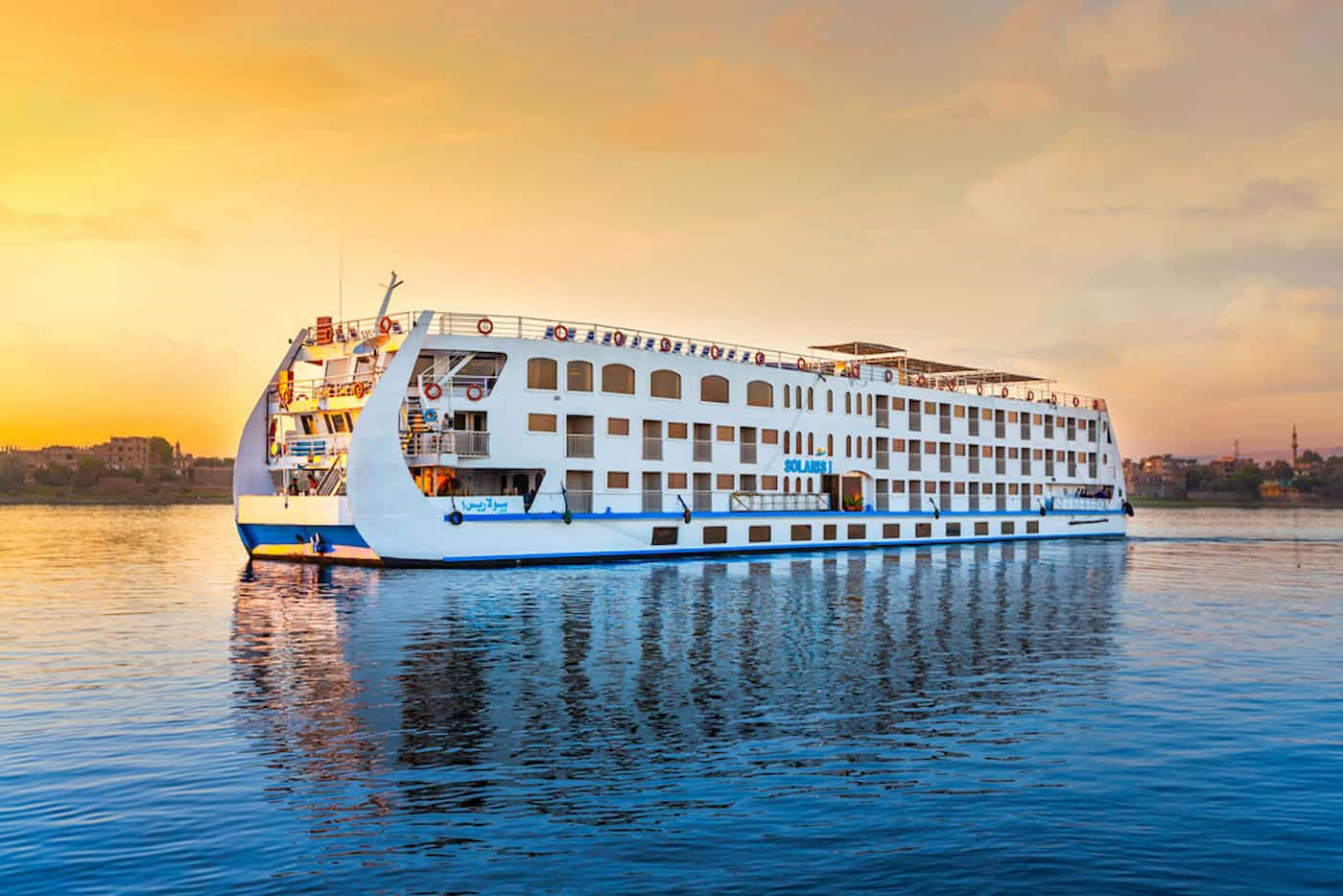Best Time to Visit Jordan: Weather, Seasons, and Travel Tips
The best time to visit Jordan, jordan boasts a wonderful reputation today, joining the ranks of one of the most interesting destinations to visit in the Middle East. A place of old cities, spectacular nature, historic sites, and way too many good friends, this is what, in simple words, Jordan can be described as. Be it visiting Petra which is also known as the ‘rose red city’ for its rosy color and was also voted as one of the New Seven Wonders of the World, either going to Wadi Rum which is a vast desert or just lying around and floating effortlessly on the Dead Sea, the country will give great experience and beauty for every single step walked.
There are many things to consider when traveling, and the duration of the visit must usually be taken into account. Jordan has different climates that vary from cool mountain-based regions to hot valley deserts, and the country also holds a spirit of cultural festivals and events regularly.
Considering the aspects above, upon analyzing the state of things, it is quite clear that more favorable environmental conditions exist throughout the year for visitor enjoyment. One such period, although not the only one, is spring (March to May). It is the most temperate part of the calendar, when flowers bloom around deserts, and environments turn green. Another is autumn (September to November), when the day can be quite warm and still early mornings and nights are fresh, inviting tourists in the regions to numerous attractions such as sightseeing, gentle hiking, and camping, right inside the desolate lands, for instance.
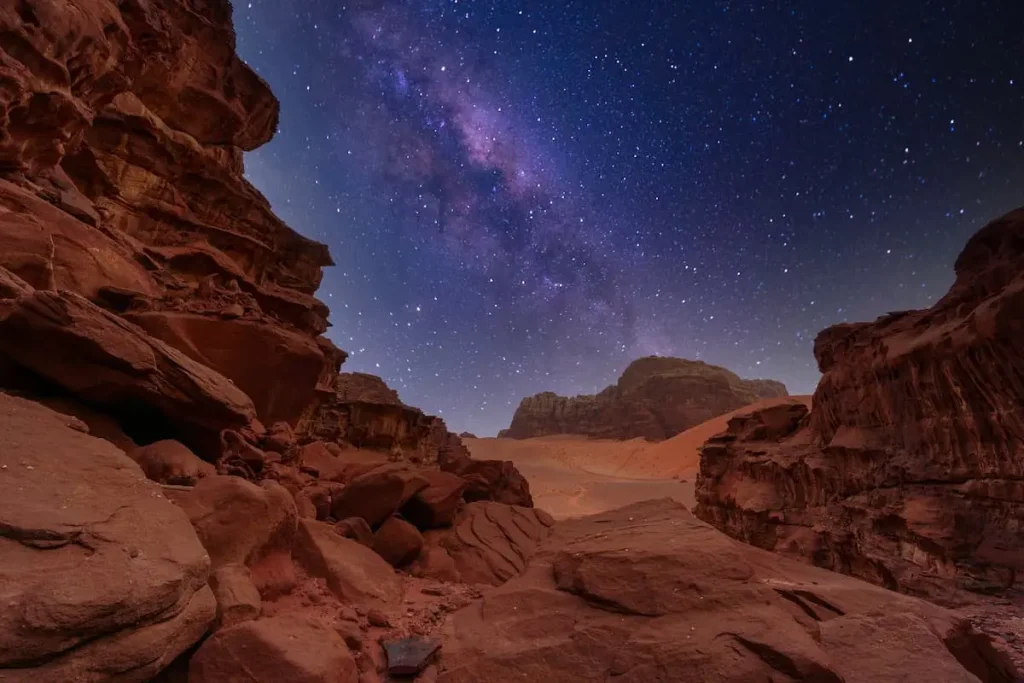
Majestic view of the Wadi Rum desert, Jordan, The Valley of the Moon.
1. Overview of Jordan’s Climate
Jordan’s weather contains a vivid variety of landscapes, predominantly the turn of the warm Mediterranean winds throughout the winter to the hot desert winds of the Arabian Peninsula during summe,r and thus dividing climatic regions in the country as follows: highlands of Mediterranean character, arid desert and the Jordan Valley with the Dead Sea, which is the lowest place in the world.
Conversely, the Jordan Valley and the Dead Sea are hotter because of less elevation. During the summer season, the temperature is recorded to be more than 35 °C, with the annual average temperature exceeding 25 °C. In most other destinations on the list, short-sleeved clothing is acceptable even in December. The lowest temperature in January does not fall below 9 °C. This moderation of temperatures even in winter makes the Dead Sea an attractive place to visit throughout the year, especially for persons focusing on health and other relaxing activities to unwind under the sun.
Over the hot, dry summers and mild winters, the lower desert regions, particularly Wadi Rum and Aqaba, are the ones where this is mostly felt. Warmer than the highlands because of its near-sea aspect, Aqaba is a cosmopolitan center for scuba diving, beach sports, especially when the geographic areas to the north are cooler.
In conclusion, Jordan has numerous weather scenarios where one should be careful about the season they wish to tour. When it comes to the summer heat, however, this may not include bulky Petra or Wadi Rum excursions. Surprisingly, the spring and fall present themselves with very nice weather conditions, almost guaranteeing comfort, convenient transport for touring, and a lot of entertainment and activity.
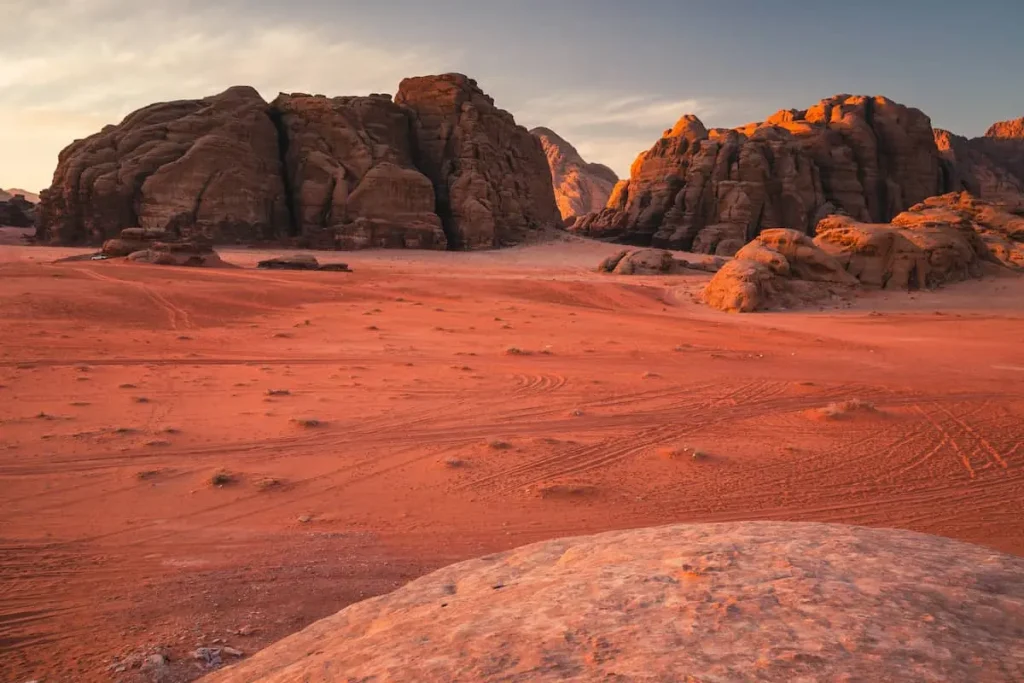
landscapes of Wadi Rum desert in Jordan
3. Best Seasons to Visit Jordan
A. Spring (March – May)
As it stands, Jordan is perhaps at its finest in spring. The entire country seems to come alive with mild weather and vivid landscapes, and this time of year offers daytime temperatures of about 15–28 °C, which are very good for most travel backpackers. The local population or residents in Amman or elsewhere are prone to dressing accordingly for the weather. However, the good thing is that this period has much but tests but rather a lot of rewards.
The picturesque corners and the natural beauty of the country show their added attraction. Beautiful blossoms usually fill the crater of Wadi Rum, and the dry cliffs around Amman and Petra turn green. This makes it quite easier for people and their families to enjoy the parks and hiking trails, as they pass by the ancient remains of Jordan. Popular historical sites like Petra and Jerash, the former noted for its intricate rock carvings and the latter even more so for its extensive ruins, tend to be frequented more during the weather when it is nice.
Since the landscape is somewhat less habitable in the cold winter season, the spring season is rated as the best time to go to Wadi Rum for a desert camp. That is, the days are sunny and welcoming, but not as scorching hot as other times of the year, hence one can plan a trip to the wadis.
Spring provides such perfect conditions that it is no wonder it is also one of the busiest seasons in Jordan in terms of tourist traffic. True, it’s not European summer busy, but rather travelers should brace themselves that there are many more visitors to the attractions, including Petra. The best options can be guaranteed by arranging the accommodation and the services of a guide on time.
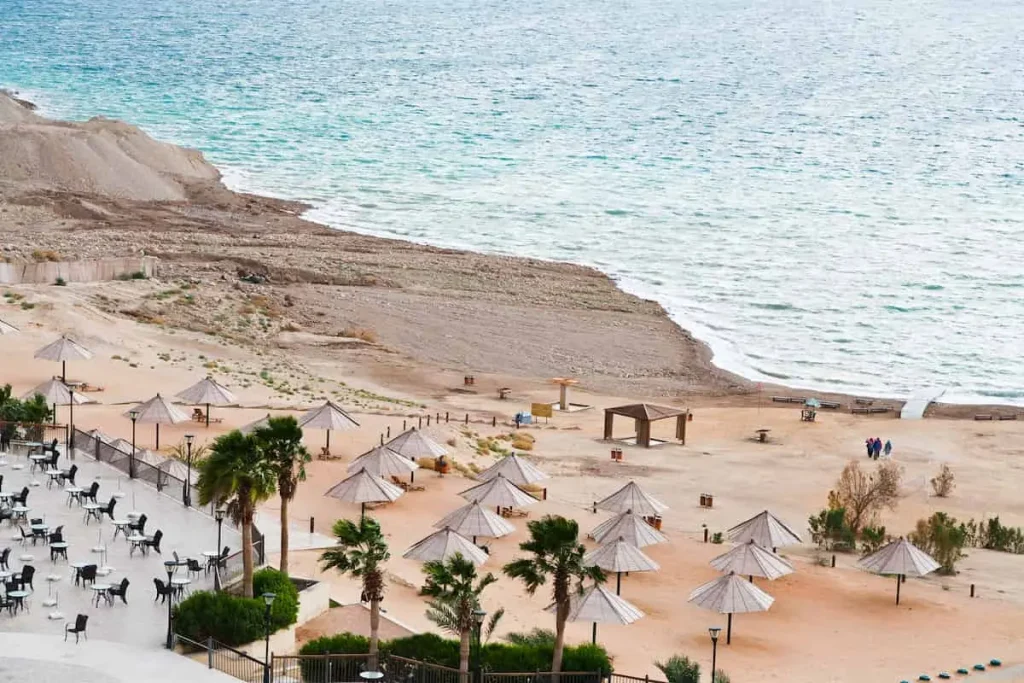
sand beach on Dear Sea coast in Jordan
B. Autumn (September – November)
Fall is a season of the year that is also appreciable in Jordan. This is mainly because you will get good weather and activities for outdoor lovers as regardless of the season, there are hardly any tourists. i.e., Summer tourists and locals are in abundance in the city. Winter, however cold it may be, attracts a generous amount of tourists to the national parks. Nevertheless, the mentioned advantages of fall are perceived from a vacation snowy point.
Autumn is a charming time of the year in terms of the pleasant weather and the crowd of tourists who leave the area. From September to November, Jordanians usually enjoy a comfortable temperature during the day. It can be as low as 18 degrees or as high as 30 degrees, which translates to 64–86 °F in these cities, respectively. And when drawing to an end in the night, it gets cool, and it’s good to go out and explore sights during the day, coming back in time after curfew is equally pleasurable. Of course, it does not in any way cook, that is, in comparison with the hot season, in a gentle season which allows you to get out of gloves and see the sights.
This time of the year is especially convenient for various kinds of outdoor activities. For instance, walks along the hills in the Dana Biosphere Reserve, or Petra, in places equally irregular, are more enjoyable in the afternoon when the length of the shadow is longer. In the desert of Wadi Rum, daytime temperatures are usually warm, and nights are cool and therefore, people can engage in jeep tours in the desert, watch stars, and enjoy Bedouin tents. At the same time, excursions to the cultural cities like Amman or Jerash become more interesting, due to the fact that people wearing proper clothing can leisurely proceed through the historical places without melting.
There’s a reason why one would prefer a trip in autumn over any other time of the year, and this is the fact that there is a far lower number of tourists during this period than there usually is in spring, or rather during October and November to be precise. This simply means that there would be very short or no queues at all tourist attractions, the hikes are not crowded, and many places have good value for the money that one would pay for such hotels and guide services. Especially for those people who wish to have enough time to unwind and yet also experience the best climate, autumn is every bit the best season to opt for.
4. Other Seasons in Jordan For The Best Visit and Experience
A. Summer (June – August)
Summertime in Jordan is harmonious with breezy weather, but in some parts of the Middle East throughout June, July, and August, it is rather intense heat. Nevertheless, presuming that a person is in the Jordan River rift, Patagona unfound traverse, or, only in the Wadi Rum ashengenin regions on the international sphere of the Arab bedouins in the eastern deserts of the Hijaz, these places are warm, where the day temperatures can soar to over 40 degrees Celsius (104 F). During even normal daytime setbacks with somewhere not hot to move around, such extreme temperatures often may prevent any form of activity, especially for someone planning during the hot hours of the day. Some tourists are usually willing to travel yet do so with little emphasis on the status quo, allowing for an unrestrictive itinerary.
We can say that Aqaba and the Aqaba coast offer the best holidays in summer in Jordan. This part of the country is very lucky, as due to its moderate temperatures during summer compared to the desert, and there are opportunities for diving, snorkeling, and spending time on the beach. The hilly regions of the country, like Amman and Ajloun, have more pleasant weather conditions than the hot plains; these regions can be preferred as a base during this period as well. Particularly, women and children stay in the hotel and go to the museum and other indoor entertainment and cultural programs to avoid the peak heat.
Summer vacation is the ideal time to take advantage of tourism as they receives a lesser number of visitors. Since there are very few tourists in Jordan during this period, the main historic attractions in Jordan, such as Petra and Jerash, are less crowded. Furthermore, other things such as accommodation rates and the cost of tours tend to be cheaper, which is good news for the wallet during the hot days, especially for people who love traveling cheaply.
B. Winter (December – February)
Winter comes around in Jordan, and it evokes an entirely different feel, and this could be a good time for those visitors who prefer less heat and less noise. In areas of elevated ground, such as Amman, Petra, temperatures significantly decrease, including cloudy skies, and snow eventually covers the mountains. When considered as the background, these remnants provide a unique landscape that is ideal for winter touring, albeit with a provision for tourists to dress heavily in consideration of the anticipated low temperatures in the evening.
However, in specific areas like the Dead Sea and Aqaba, the temperatures during the winter months are much milder. The Dead Sea becomes an attractive destination in the winter months, where the temperatures are amiable and suitable for floating, mud baths, spa treatments, etc. You will enjoy Aqaba as well during this time of the year, the weather is perfect for diving, snorkelling, or you can just sit on the beach.
Plus, this season is devoid of the bustling and hectic atmosphere created by the visitors from other parts of the world, which is always a good thing for those who want to appreciate the beauty of the country without much disturbance. Winter, therefore, caters to fun seekers, culture enthusiasts, and those travelling on a budget as they get to explore the beauty of the various regions of Jordan in a most fascinating manner.
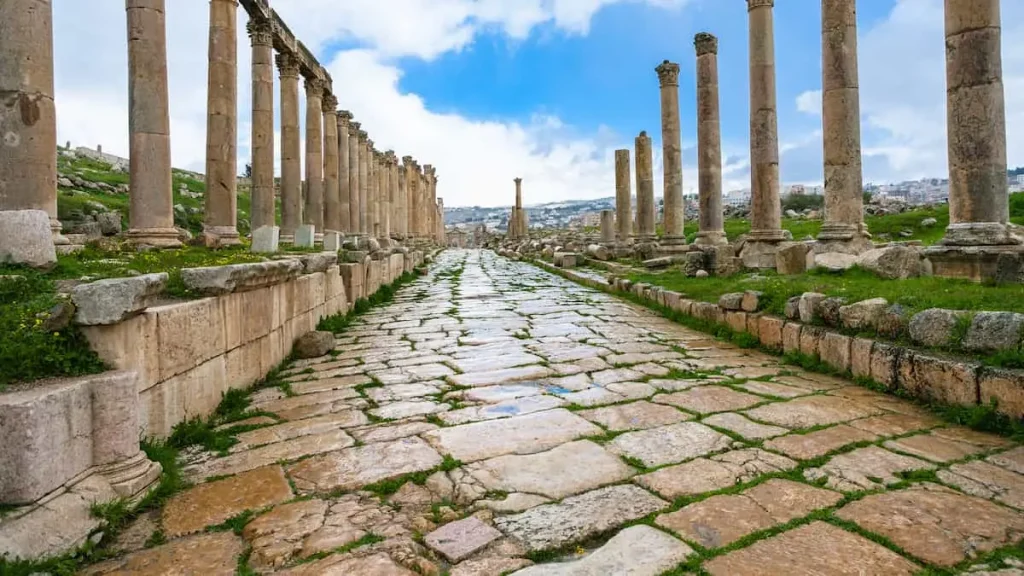
Jerash (ancient Gerasa) town in winter
5. Best Time for Specific Activities
Today’s Jordan details further fine-tuning the perfect visit window and the best time to visit Jordan. Riding and hiking sessions in Petra are a subject of prime focus. In the mild temperatures of spring and fall, one can enjoy riding and hiking for long distances through the Siq and all the way to the Monastery. Besides the optional beauty, admire the added landscapes in spring, which are truly exceptional.
Similarly, Wadi Rum camping is a spring- and fall-only activity, and the best time to visit Jordan, where the days are warm, not overly so, and the nights are cool, making it easy to unwind and enjoy some ancient stargazing alongside a campfire in a Bedouin camp. The summer desert heat is unbearable, and with winter, the nights turn cold and remain a little chilly to the point of being uncomfortable.
The unique temperament of the Dead Sea means visitors are welcomed all year round. Nevertheless, the peak seasons are winter and the shoulder months, where the temperatures stay in the warm range, making floating and wellness treatments indulgent. Aqaba is the hub of water sports that catch your attention in late spring and early autumn. Diving and snorkeling become a breeze with clear, calm seas. Although there are no moderation measures to the summer highs, the water remains cool despite the hot temperatures.
Finally, we cannot omit the cultural events as attendance is a must. The Jerash Jordan Festival of Culture and Arts occurs in July and August, featuring Jordanian and international performances as well. In parallel, the Amman International Book Fair happens in September, inviting participants from all over the Middle East.
Seasonal activities in Jordan assist in Jordan’s marvels to be enjoyed in an optimised manner.

6. Thinking About Visiting Jordan and Best Time to Visit: Crowds and Costs
Planning a Jordan trip? Reconnaissance is key! Jordan is beautiful and no doubt it will enrich your experiences, but you should be mindful about the expense, the accessibility due to crowd, and the weather. All of these greatly affect your experience.
Best Time to visit Jordan experiences peak tourist activity during spring and fall, March to May and September to November. Unlike many other locations, Jordan does not attract visitors to the hot months, which delightful Jordanian climate makes it one of the hot tourist sites to visit. During such periods, hot deals become more common, busier points of interest, and limited availability for popular tours. In addition, every visitor planning to access Petra or Wadi Rum with premium accommodations must make an early booking. Despite the large crowds, many visitors still feel that the ideal weather and livelier atmosphere during the best time to visit Jordan’s peak seasons justify the additional cost.
In comparison, the low and shoulder seasons, which encompass both summer and winter are much quieter both from international visitors and locals, which might be the best time for you to visit Jordan. This absence of a majority of international tourists improves features like hotels, flights, and tours which operate with greater discounts. Visitors shopping for Jerash, Petra, and Wadi Rum can experience greater tranquility and calmness which is far more intimate. On the other hand, certain activities might not be available during the sweltering summer heat and the cooler winter temperatures.
The outcome of your holiday is, at the end of the day, determined by what you want to do. The best time to visit Jordan comes close to a perfect approach is during the springs and the autumn. If you prefer a tighter budget along with less shoppers and tourists, then winter and summer are ideal for relaxation.
7. Travel Tips Based on Season
-
Spring & Autumn (March–May, September–November)
-
Pack lightweight clothing and breathable fabrics.
-
Bring sturdy walking shoes for exploring Petra and hiking trails.
-
Use sun protection: hats, sunglasses, and sunscreen.
-
Book hotels, tours, and flights in advance, as these are peak seasons.
-
-
Summer (June–August)
-
Carry a reusable water bottle and stay hydrated throughout the day.
-
Wear light, loose-fitting clothes made of cotton or linen.
-
Plan activities in the early morning or late afternoon to avoid extreme heat.
-
Use sunblock frequently, especially when visiting the Dead Sea or Wadi Rum.
-
-
Winter (December–February)
-
Pack layered clothing to adapt to varying daytime and evening temperatures.
-
Bring a warm jacket, scarf, and comfortable boots for highland areas like Petra and Amman.
-
Expect occasional snow in the mountains, so prepare for cold nights.
-
Pack beachwear if visiting Aqaba or the Dead Sea, as temperatures remain mild.
-
8. Conclusion
The optimal time to explore Jordan is during spring (March – May) and fall (September – November), because the temperatures are more moderate, and the entire country is beautiful and inviting for tourism. Have a good time and also walk around, do mountain climbing, and learn the local culture. These times of the year are the most convenient both in terms of getting comfortable and taking action, hence they are particularly useful for tourism in the place, especially the Petra, Jerash, and Wadi Rum area.
Alternatively, it must be noted that the exquisiteness of Jordan does not fade in any season. It is much cheaper in resorts such as Aqaba and the plateau areas in the summer due to a slight decrease in the number of visitors. While in regions like the Dead Sea and the Red Sea coastal area, there is a peaceful ambience in winter and repetitive weather conditions. Accordingly, every period of the year has an appeal, if only the envisaged trip is well prepared.
Conclusively, it’s all about the different elements of Jordan. You talk about where to hike and the ancient trails of Petra, or the qualities and values of Wadi Rum, or even you talk about how to swim in the Dead Sea or look at the sky in some remote place in the desert, Jordan always gives you priceless memories. Travelling to Jordan, hence, has a feeling facts dreamers exist ultimately in their musings.

